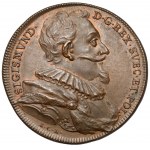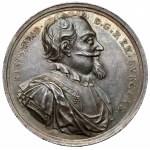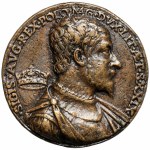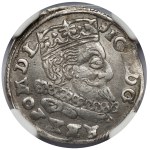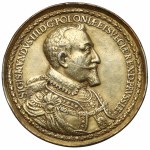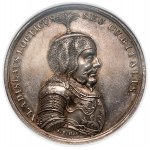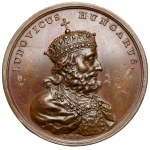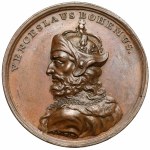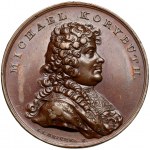A beautiful, original medal from the most famous Polish medal series - the royal suite.
Medal of the revered reign of Sigismund I the Old, from the early stage of minting - even before the obverse stamp was broken. Preserved in very nice condition.
In addition, with the provenance of a mysterious hoard known, among other things, for the multi-drachma and multi-drachma coins of Royal Poland (circular punch on the rim, at 12 o'clock). Possibly of Edward Doepler (pre-1838), lessee of the classical lottery in Warsaw.
Signed I. I. R. (Jan Jakub Reichel).
The Royal Suite is the most coveted and most difficult to collect medal series in Polish numismatics. Original medals from this series appear in the trade very rarely, some only once every few or a dozen years.
The initiator of the royal series was King Stanislaw August Poniatowski. In 1791, he commissioned his court medalist, the famous Jan Filip Holzhaeusser, to create a post of Polish kings on medals. They were to depict royal portraits on the obverses, whose prototypes were Bacciarelli's paintings hanging in the Royal Castle, and on the reverses concise descriptions of the achievements of the rulers in question, for which the king himself was also to be responsible.
And so, in 1791, the first of 11 stamps for which Holzhaeusser was responsible were created. After his death a year later, Jan Jakub Reichel continued the work, preparing medals from Sigismund I the Old. In total, between 1791 and 1798, stamps were created for 23 medals, which today constitute the set of the Suite.
Medals in the 18th century were minted in gold (according to M. Męclewska, one piece each for Stanislaw Augustus), silver and, according to some historical sources, bronze. Among the latter, we also find later prints from the original stamps, which, together with numerous 19th-century casts, copies or medallions along the lines of the series (including Minter medallions), testify to the great interest in the suite and the problems posed by collecting it - both at the time of the Partitions and today, more than 200 years later.









